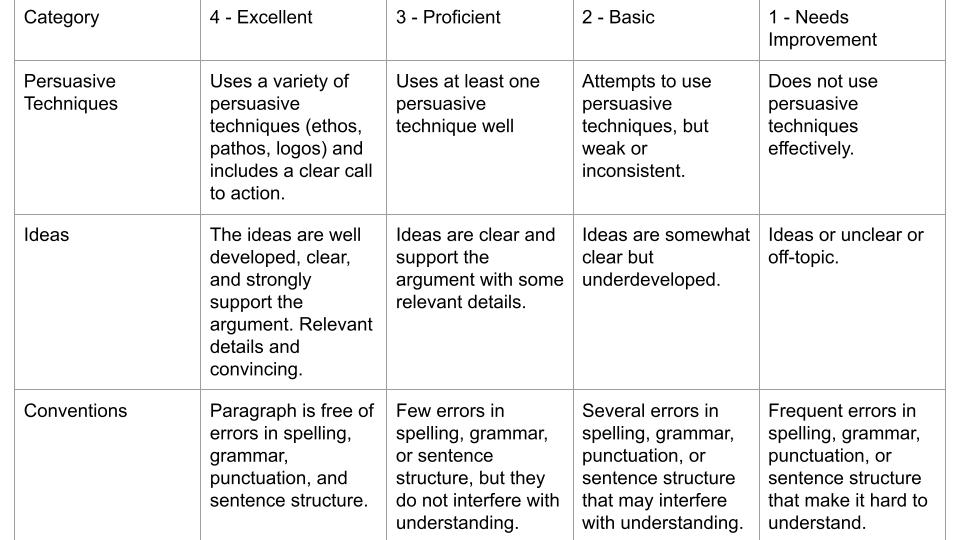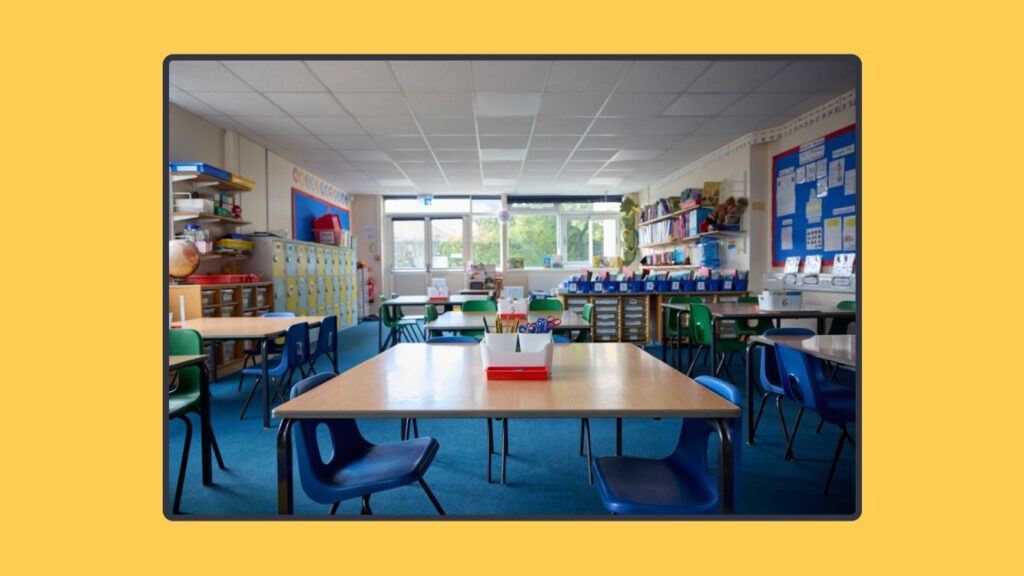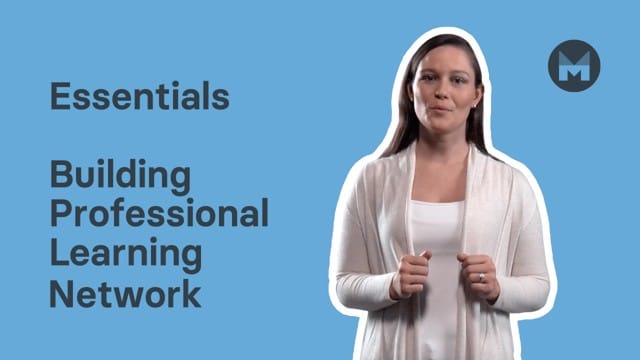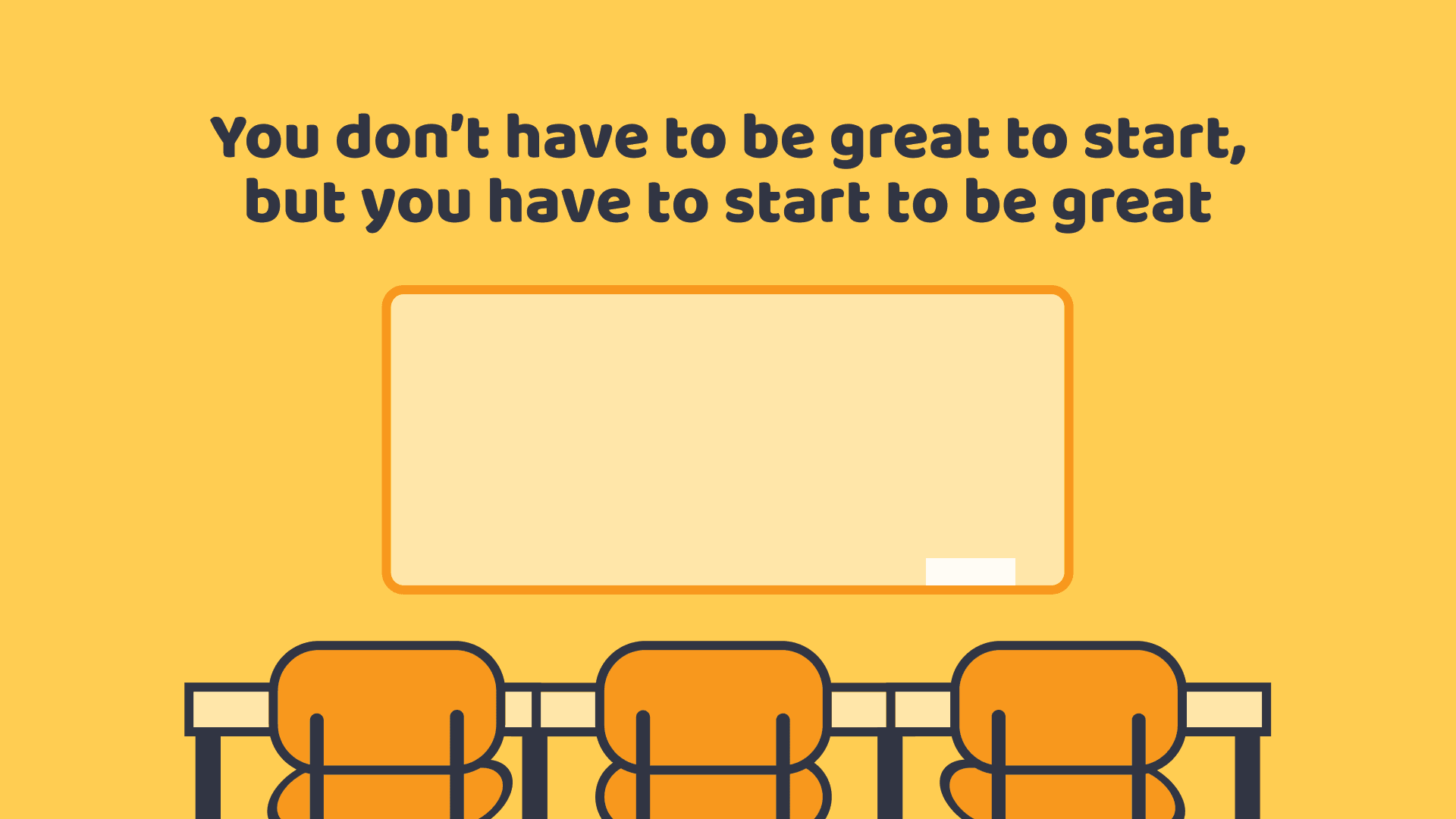5 Classroom management techniques for new teachers
In this guide
The importance of effective classroom management
Being a new teacher can feel overwhelming. There is a lot to remember and even more to do!
Effective classroom management is important because it increases learning standards for students (and makes life easier for you!). In classrooms that are managed appropriately, the environment is calmer and students tend to learn more and retain more information. A well managed classroom can increase student engagement because students are not distracted by behavior.
The teacher also benefits from effective classroom management as it allows the teacher to maximize instructional time and reduces stress. Instructional time is vital to student success. When the teacher is not focused on managing behaviors, they can focus on individual students as well as content delivery and instruction. Teachers have more time for planning their lessons and focusing on the craft of teaching.
Key classroom management techniques for new teachers
1) Set clear expectations and routines
Clear expectations are vital to a well managed classroom. Students need to know how they are expected to behave.
Setting clear, fair and practical rules at the beginning of the year and reinforcing those rules throughout the year is vital. When developing rules or expectations, less is more. Creating a list of twenty rules that students must follow is not conducive to those rules being followed. Setting a few non-negotiable but realistic rules is more effective.
Creating rules with students has been shown to be a more impactful way to create a positive learning environment. When students have a say in setting their own rules, they are more likely to stick to them. Reviewing rules and expectations on a regular basis is useful for managing the classroom.
Along with setting clear expectations, creating routines is also important. In my high school classroom, students follow the same routine each day. They know to come into class, get the materials listed on the board, we do our first five activity (more on this later), we read independently for 10 minutes, we do our lesson, and then they complete the exit ticket or closing assignment.
Knowing this routine and what to expect creates a sense of calm. Many students do not have a routine and stable life outside of school. Routines and clear procedures are also important for many neurodivergent students.
2) Learning targets

Learning targets or learning goals assist the teacher and students in knowing the objectives for the lesson. The learning target focuses the lesson and identifies the end result. This also ties into setting clear expectations.
Many schools and districts have requirements when it comes to a learning target or learning goal. However, there are some guidelines a teacher should follow when creating these goals:
- Goals should be communicated with students at the beginning of an assignment, unit, or lesson.
- The teacher should provide feedback on the progress of the goals.
- The goals should be revisited with students.
- There should be some sort of summative evaluation of the learning goals so students can show mastery.
One way to include learning targets is through writing a learning objective.
A learning objective should include:
- What students are going to learn,
- How they are going to show mastery, and
- What the end product will be.
Learning objectives should be shared with students to increase engagement and relevance.
Example learning objectives:
- Algebra
We will solve linear equations using algebraic properties, and I will apply these strategies to find solutions to given problems. - Social Studies
We will explore the Bill of Rights, and I will identify key rights in the Bill of Rights and how they affect my daily life. - English
We will analyze ‘Romeo and Juliet’ focusing on language and theme, and I will interpret a key passage and explain how the use of language connects to the theme. - Science
We will explore how plants make their own food through photosynthesis, and I will describe in writing the role of sunlight, water, and carbon dioxide in photosynthesis.
Another way to help students to reach learning goals is to use rubrics.
A rubric outlines the expectations for a given project or assignment. Depending on your needs, a rubric can be adapted to be either basic or it can be more detailed. Using a rubric can also act as a writing or study guide for students as well as simplifying grading an assignment.
Below is an example of a rubric for a middle school persuasive paragraph assignment:

I created the above rubric myself as an example, however, using AI to help create rubrics can help save time. Remember to carefully review any AI created materials to be sure they meet the parameters of what you are trying to achieve.
3) Build positive relationships
It is important to cultivate a positive learning environment.
The relationship a teacher has with their students can have a significant impact on the classroom learning environment. The relationships between students are also important.
- Social contracts
One way to build positive relationships is by creating a classroom social contract. A social contract outlines the way individuals in the classroom will treat each other. This should be made collaboratively and then each person signs it to agree to the contract. Social contracts enable students to experience accountability in a safe and supportive atmosphere.
- Conversation
Another way to build positive relationships is through conversation. In my classroom for the first 3-5 minutes of class each day we participate in what our campus calls the first five.
The goal is to help teachers connect with their students. We use the following to get to know each other:
- Memes,
- Inspirational videos,
- Would you rather? questions, and
- Personal interest questions
My students really love the questions and many of them lead to productive classroom discussions. Students have learned about each other and found common ground during this time.
- Collaborative Learning
Opportunities to work cooperatively can positively impact the classroom environment too.
Allowing students to work in groups can be scary for a new teacher because it requires that the teacher give up some control. However, when group work is structured, expectations for work are outlined, and students are intentionally grouped, group work can be a positive and productive experience.
4) Physical space

The way a classroom is set up can impact the classroom climate. Desks or tables need to be arranged so that all students can see. If students are working in small groups, the desks need to reflect the situation. Students should also be free of distractions including:
- Distractions outside the window or in the corridor
- Being too close or too far away from air conditioning, the board, supplies or the heater
- Not being able to hear the teacher
- Being seated with people who are not conducive to a productive environment
Resources
A way that the physical space can help teachers manage their classroom is by having resources available. If students use notebooks or workbooks daily, these should be stored in space that students can access easily.
Paper, writing utensils, notebooks, textbooks, and/or electronic devices that are needed on a regular basis should be easily accessible.
Power zones
Proximity or powerzone is also an effective technique for classroom management. It is almost impossible to manage students and provide discipline while sitting at one’s desk.
Arranging the room so that you can move around and be in proximity to students can help you to better manage behavior.
Flexible teaching
When students are working in small groups, the teacher should be moving around the room.
This serves two purposes:
- The teacher can monitor behavior, and
- The teacher can monitor comprehension and learning.
If students are using technology, proximity can help the teacher observe that students are on the appropriate task.
5) Positive reinforcement

Positive reinforcement is a method that improves relationships and aides in discipline. Through positive reinforcement, teachers are able to highlight students’ good behaviors, their successes, and their talents.
Ways to use positive reinforcement in the classroom
- Verbal praise
Everyone loves to hear what they are doing right!
Verbal praise should be timely and specific. A way to make verbal praise even more impactful is to share your positive affirmations with a student’s parent/guardian.
Many students receive very little praise or have a negative experience when teachers call home. This can be impactful for your relationship with students and their parents.
- Tangible reinforcement
Stickers, erasers, pencils, etc. are examples of low cost items that can be given to students.
Other examples of tangible reinforcements can be high fives and fist bumps. They do not have to cost money.
You could also create a classroom chart with goals when certain milestones are met, such as:
- 5 extra minutes at lunch,
- Free time,
- Student’s activity choice or
- Sit where you want day.
- Extra privileges
Giving students extra privileges can be a great way to implement positive reinforcement.
One of my own son’s teachers would allow students to earn a “buddy” pass. Those students were able to bring a beloved stuffed animal to keep on their desk that day. It was fun and made the student feel special that day.
Overcoming common classroom management challenges
It can take time to learn the art of classroom management. As teachers, we are constantly learning and honing our craft.
Persistence
I worked for several years as an instructional coach with new teachers. I would always suggest to them that when they start a new technique or practice, to do it multiple times before deciding if it is effective. Being good at something takes practice. When an activity does not go as planned or it is the first time doing it, take the time to reflect, and evaluate changes to be made the next time.
Remember, just because it didn’t work that day or with that class does not mean you should necessarily remove it from your repertoire.
Time
Learning how to structure your time in the classroom can be difficult. Teachers have many demands on their time during the day – meetings, planning, grading, duty, and more. Finding the time to focus on a specific skill or to reflect can be difficult. Choosing one technique at a time to focus on can help to address this issue. If a teacher wants to try something new or make a change to a process, choose one and work on it until it is accomplished. For example, early in my career I wanted to focus on better use of formative assessments. I chose this one goal and also used it as my professional learning goal for my evaluation. This allowed me to focus on one skill and to set smaller goals that helped me achieve my larger goal along the way.
Diversity in the classroom
High needs students can also be a challenge in the classroom. Today’s classrooms have a diverse student composition with most classrooms having several types of English learners, special education students, at least one student with a behavior management plan, general education students, gifted students, and more.
As a new teacher, this can be overwhelming. However, focusing on creating a positive environment can alleviate some of this stress.
Seating
Use a seating chart to place students in groups and areas of the room that benefit them as well as benefit you as the teacher. Some students work well together and some do not. A student may need to be close to the front or close to the instructor. Seating charts can also be adjusted as needs arise. Websites like Canva can be used to create seating charts quickly.
Tools and resources to support classroom management
Lifelong learning
Being a lifelong learner is a part of being an effective educator. There are a variety of resources offered through ClickView that can support classroom management. Reading blog articles like the ones referenced from ClickView throughout this article can be helpful. Blogs are great because they contain a wealth of information in a short reading time.
Learning from others
Other ways to learn include books, videos, and podcasts about education. Observing experienced teachers is a great way to learn about effective classroom management techniques. Seeing an effective teacher in action can greatly impact your own practice. Ask other teachers if you can observe them and learn from their skills.
Professional learning
A professional learning community (PLC) can be an excellent resource for support with classroom management. Professional learning communities are groups of educators that work together to address teaching and learning needs. Many schools have designated time and resources for PLCs, however, teachers can form their own learning networks as well.
Don’t reinvent the wheel!
There are online resources for learning networks, but I would also encourage a new teacher to cast their net wider, so to speak. Look for teachers that teach similar subjects, other new teachers, and other educators that can serve as supporters and mentors. Having a variety of support networks is great for learning and growing as a teacher.
While classroom management has its challenges, they are not insurmountable. Learning a few helpful strategies and using them consistently can transform the classroom routine. Life-long learning, persistence, and flexibility are key to managing an effective classroom.
Sources
- Cain, S. and Laird, M. (2021) The Fundamental Five Revisited Exceptional Instruction in Every Setting. Monee, IL: Lead Your School.
- Ismail, I. (2023) ‘Using Positive Reinforcement to Increase Student Engagement in the Classroom”, Minnesota State University Moorehead. Available at https://red.mnstate.edu/cgi/viewcontent.cgi?article=1885&context=thesis (Accessed: 29 January 2025). Marzano, R. and
- Marzano, J. (2003) ‘The Key to Classroom Management” Educational Leadership, 61(1), pp. 6-13. Available at https://www.researchgate.net/publication/283749466_The_Key_to_Classroom_Management (Accessed: 28 January 2025).

Mattie Farrer
briefcase iconAVID Site Coordinator / Content Curator
Mattie Farrer has been an educator in various grade levels and capacities during her career. She has a passion for supporting English learners and their language development. She also loves helping teachers reach all students.
Other posts
Want more content like this?
Subscribe for blog updates, monthly video releases, trending topics, and exclusive content delivered straight to your inbox.


















